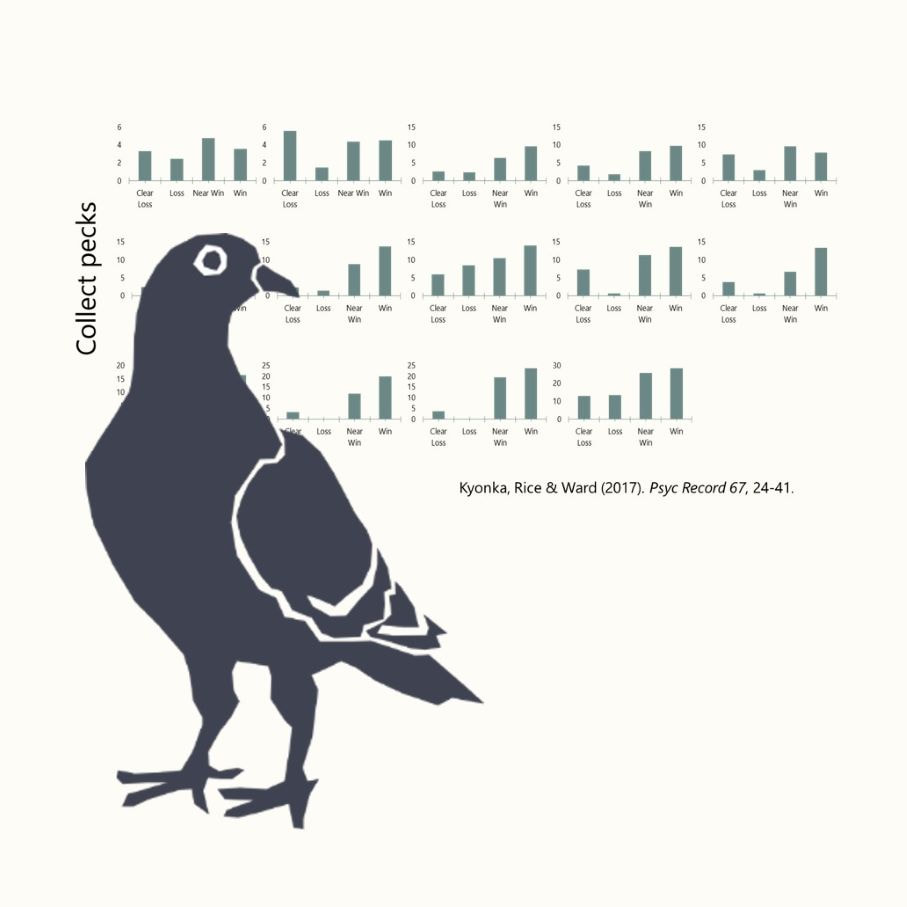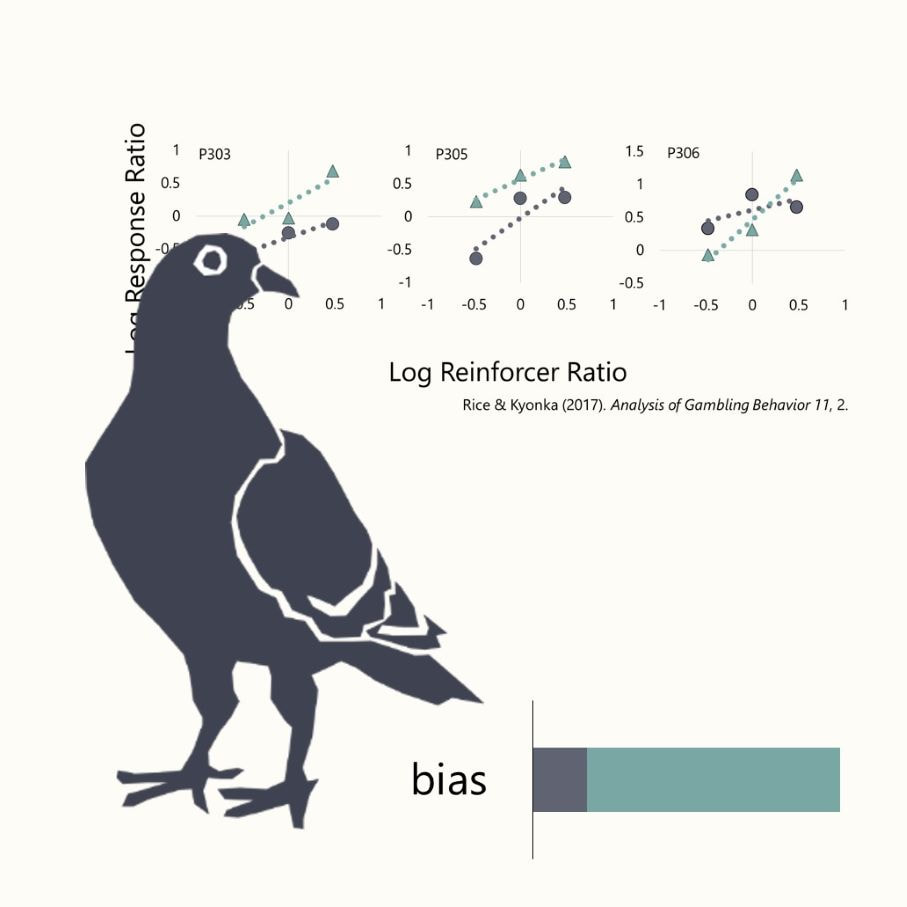Pigeons are an animal model for problem gambling.
Stimulus discrimination and response strength both contribute to the conditioned reinforcing value of stimuli, but it can be difficult to asses them separately. In slot machine gambling, stimuli that signal losses but resemble those that signal wins ("near wins") have greater conditioned reinforcing value than other losing stimuli. This 'near-miss' effect can be pronounced in gamblers, but whether it is a problem of stimulus discrimination, response strength or something else is not well understood.
In Categorical Discrimination of Sequential Stimuli: All SΔ Are Not Created Equal, we presented pigeons with a stimulus discrimination task somewhat analogous to a slot machine.
|
Lights appeared sequentially on a side key during a response-dependent sample phase. The pigeon had the opportunity to peck during a 5-s collect phase. Pecking during the collect phase earned food when sample-phase lights were all red (a "win"), but otherwise there were no programmed consequences. Pigeons could respond more than once per trial, so we were able to use response probability and conditional response rate as separate measures of stimulus discrimination and response strength.
|
When the light did not change from red to green until the final peck (a "near win"), pigeons were less likely to peck during collect phases of those trials than during collect phases of all-red, winning trials. However, when they did peck, the response rate was as high as it was in winning trials. For other losses, the probability and rate of collect-phase responses was low. In other words, pigeons were able to discriminate near wins from wins, but near wins and wins acquired similar response strength. To the extent that our results generalize to human subjects, they suggest that gambling interventions designed to enhance the discriminability of near wins as non-wins are unlikely to change their perceived value.
In Pigeons choose to gamble in a categorical discrimination task, we embedded the discrimination task described above into terminal links of a concurrent chain.
|
This allowed us to measure pigeons' preferences for different types of outcomes. All three pigeons in these experiment showed a bias in favor of probabilistic (i.e., risky) food outcomes over certain ones, but only when the probabilistic option included near wins. The pigeons' biases demonstrate that near wins acquired conditioned reinforcing value and affected their choices. In combination with other results, this suggests that excessive gambling may be a function of disordered reward valuation... at least in pigeons!
|



